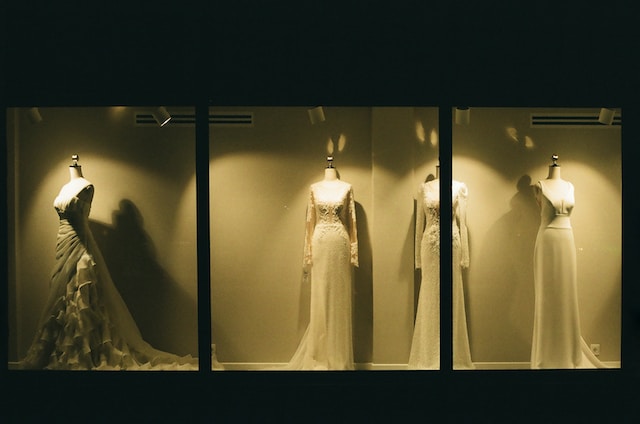Between July 3rd and July 6th, numerous brands displayed their fall-winter haute couture collections in the streets of Paris. Haute Couture Fashion Week was marked with humongous structures and shows, reshaping important French historical places like Versailles and the Pont Neuf.
Whenever big luxury brands create elaborate runways and display their exaggerated collections mixing creativity with exclusivity, questions about the impact of these luxurious events pop up.
What’s the impact of these events? How are these clothes produced? Can luxury brands really be sustainable? Are sustainable materials enough? Questions like this are emerging more and more with the increase of worries about climate change and work conditions all over the world.
In this article, we’ll dive further into this discussion and try to find answers to these questions. Does sustainable Haute Couture exist? Let’s find out.
Sustainable Haute Couture initiatives in the AW2023-2024
The matter of sustainability for sure has made its way into the world of haute couture, and several designers have incorporated sustainable initiatives in their collections or created fully sustainable brands from scratch.
For the fall-winter collections, we couldn’t expect anything different. Sofia Crociani, the designer responsible for the Aelis collection, found a way to marry sustainable fashion with tradition to create a sustainable Haute Couture collection.
Using dandelions as inspiration, Sofia created a collection by upcycling ballet tutus donated by the Paris Opera Ballet. The pieces brought awareness about the impact of global consumption and highlighted the details in the tutus.
The tutus were reshaped to compose a series of skirts, dresses and silk gowns, creating a very delicate collection that shined on the runway.


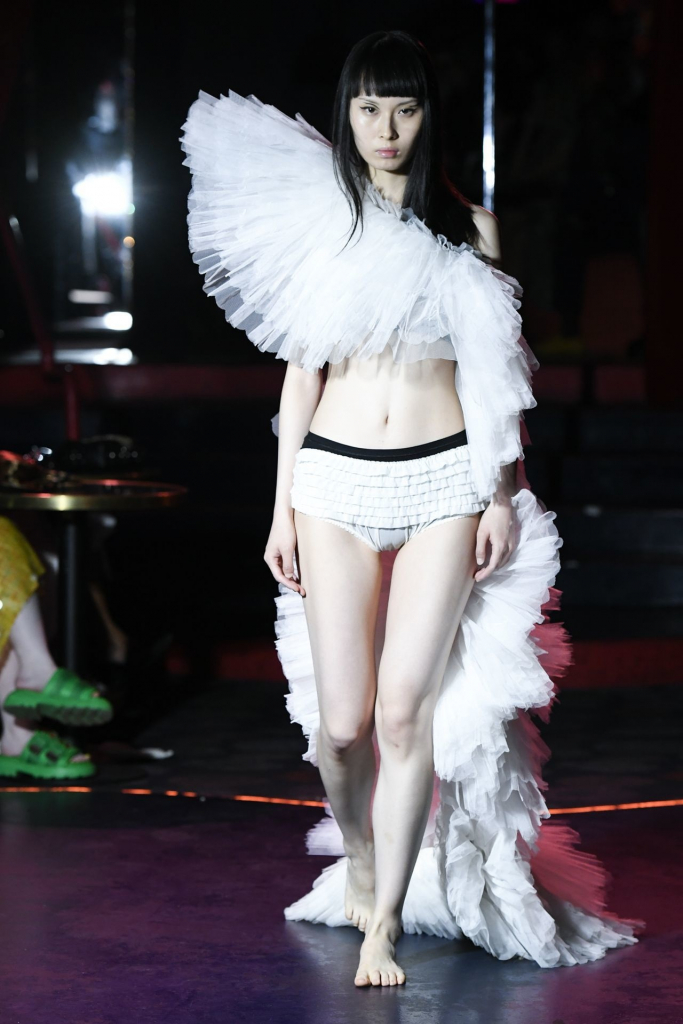
Another designer that showcased a sustainable Haute Couture collection made from upcycled materials is Ronald Van Der Kemp. His Haute Couture Fall Winter 2023-2024 collection called “The Reset” mixed innovative materials with wild designs.
The collection, made out entirely of recycled and upcycled materials, was displayed at the Atelier Néerlandais where the pieces were hung on the walls like artwork in a way that created a real unique experience for the show.
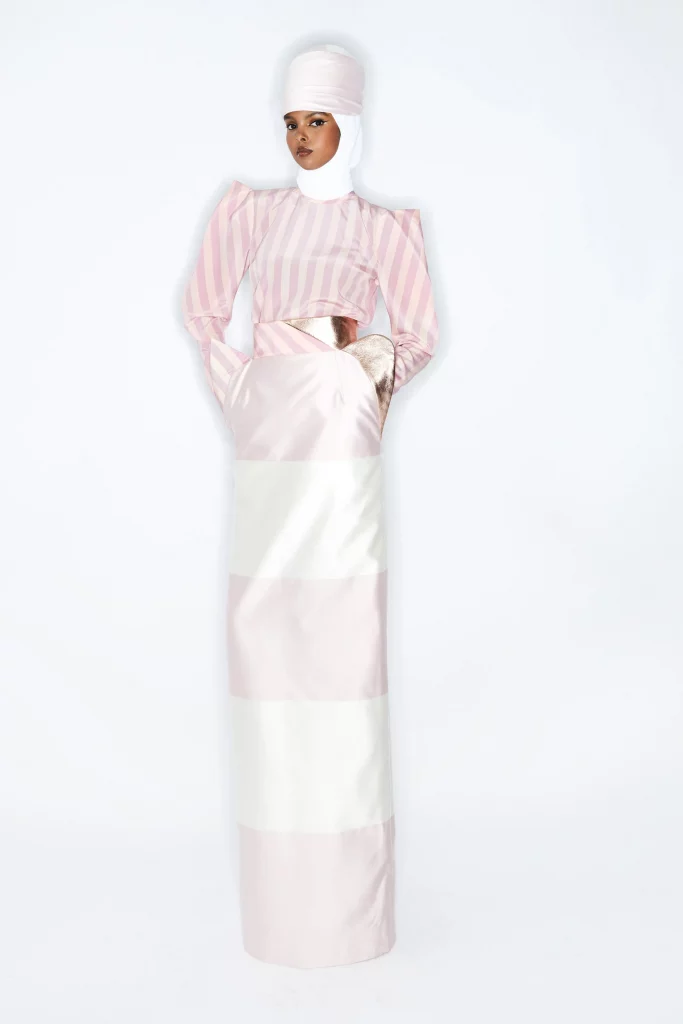
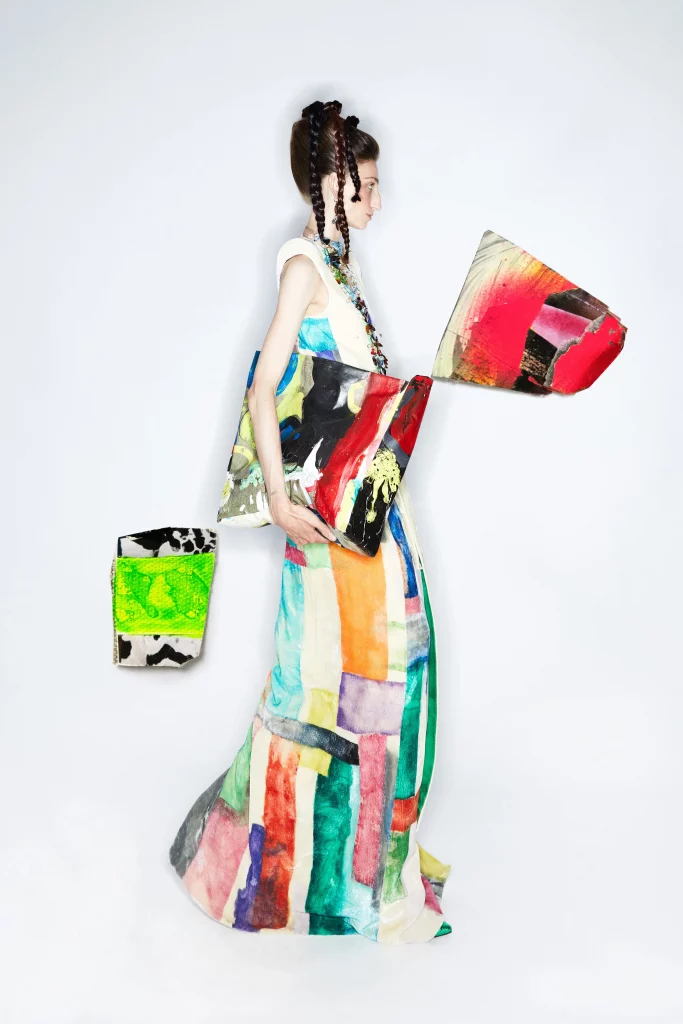

There were also brands who chose to do collabs in order to have a sustainable approach to their shows.
For example, the breathtaking Tony Ward Couture Fall Winter 2023-2024 Fashion Show worked alongside the digital fabricator Batoul Al-Rachdan from Studio B.O.R. Together they brought the designs to life without hurting the planet.
Together, they developed a 3D dress made out of biodegradable plant-based material, assembling craftsmanship, technology, and sustainability.
The designs told a story of healing and dove deep into human feelings, mixing patterns and braids to create pieces that resembled unhealed wounds and muscle-like textures.
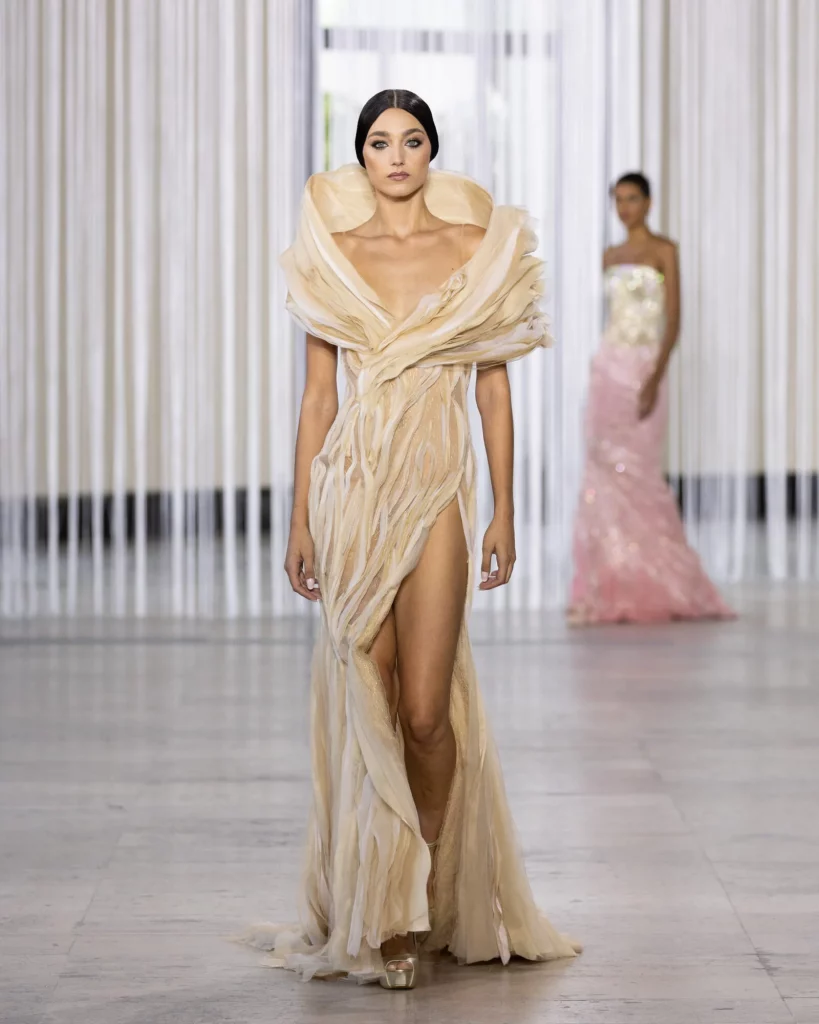
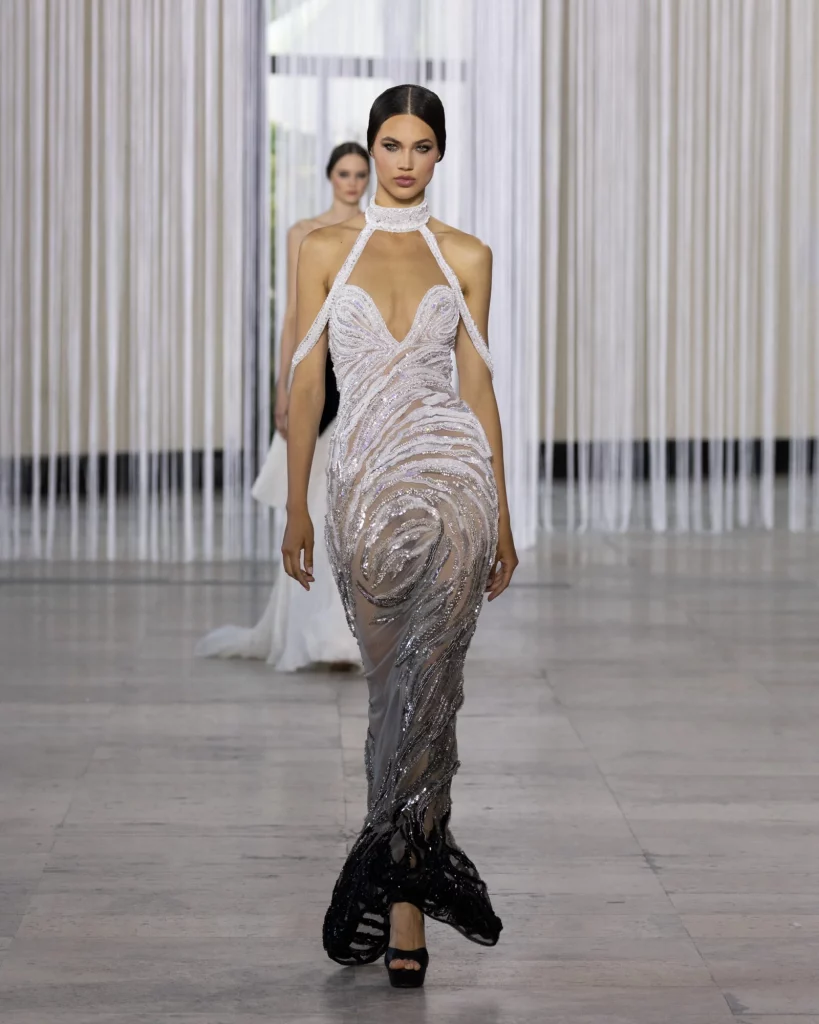

Even with innovative and sustainable initiatives like these, haute couture still has a long way to becoming really sustainable, even if at its core, it’s closer than other types of fashion.
Sustainable Haute Couture and the Slow Fashion Movement
Haute couture fashion is literally defined by one-of-a-kind pieces that are developed with strong craftsmanship that takes several hours and are made to last a lifetime. When it comes to slow fashion, it really can’t get any slower than that.
In the past, haute couture designs were worn much less and made only for runway purposes. However, nowadays with the growth of social media and influencers, we see more and more celebrities taking those haute couture dresses out of the museums back to the glamor of red carpets.
This reality really gives haute couture a real sustainability purpose because it’s actually reducing the number of garments made and consumed, seeing that celebrities and influencers are looking for pieces that were already crafted.
Nevertheless, Haute Couture is a very elite type of fashion, exclusive to around 4 thousand people in the entire world. Therefore, even if Haute Couture is sustainable, its impact in the fight against global warming and climate change isn’t palpable and doesn’t make a big change.
Designers say that even if it’s not for everyone, the art behind haute couture spreads the message of sustainable fashion and can impact how people consume.
In an interview to Women’s Wear Daily, Van der Kemp said “If you present clothes in a different context, they become new again. I think this is the lesson to learn for everyone: we don’t always have to make a trenchcoat every season.”
“It’s so much about spending, so much about business, and more and more and more, but this growing is really killing our world.”
Ronald Van der Kemp, 2023
A socioenvironmental note
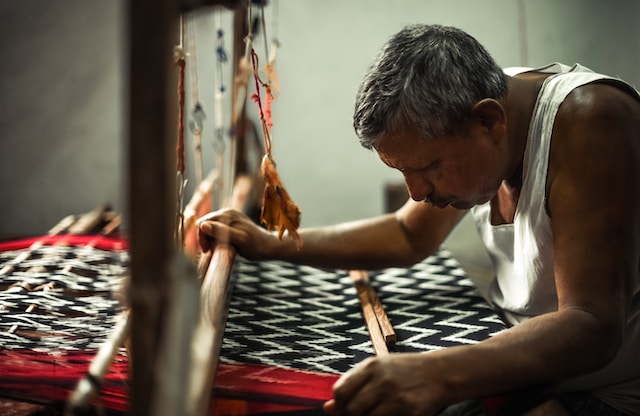
Sustainable fashion is not only about sustainable materials, innovative fabrics, and upcycling. To create a real environmentally friendly fashion industry, we have to secure proper work conditions for the people who create fashion.
At its core, Haute Couture is local craftsmanship that folds into garments that are real art pieces. But, in reality, multiple luxury brands ship their production overseas and don’t disclose to customers the conditions of their craftsmanship.
In 2020, an article by the New York Times showed that famous brands such as Dior and Saint Laurent were using several Indian artisans to embroider thousand-dollar garments.
The artisans work in unhygienic conditions and are cramped up in buildings without emergency exits.
“They sewed without health benefits in a multiroom factory with caged windows and no emergency exit, where they earned a few dollars a day completing subcontracted orders for international designers. When night fell, some slept on the floor.”
quote taken out of Luxury’s Hidden Indian Supply Chain, an article by the New York Times
When contacted about the issue, most brands were evasive and didn’t take full responsibility for the reality of the workers in question.
In summary, although the Haute Couture industry has made breakthroughs when it comes to sustainable fashion, brands that charge thousands and sometimes millions of dollars for clothes and accessories could be doing more.
That being said, the efforts from designers and entrepreneurs to change that fact are indeed effective and we can stay hopeful for a brighter tomorrow.
Want to know more about sustainable fashion and fashion week? Read next:
